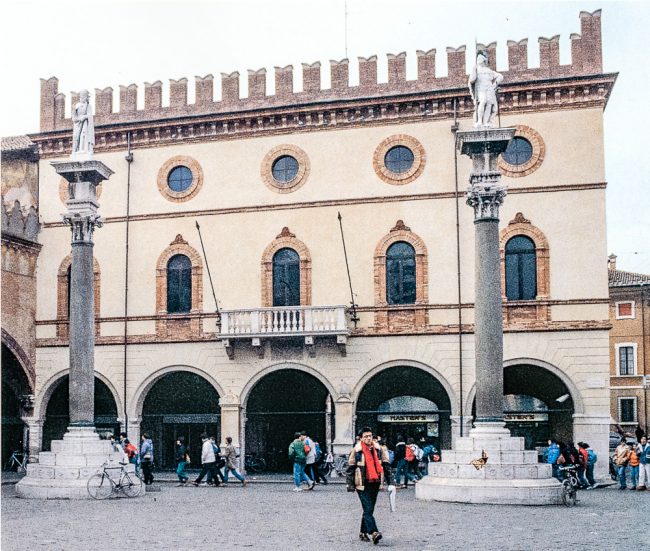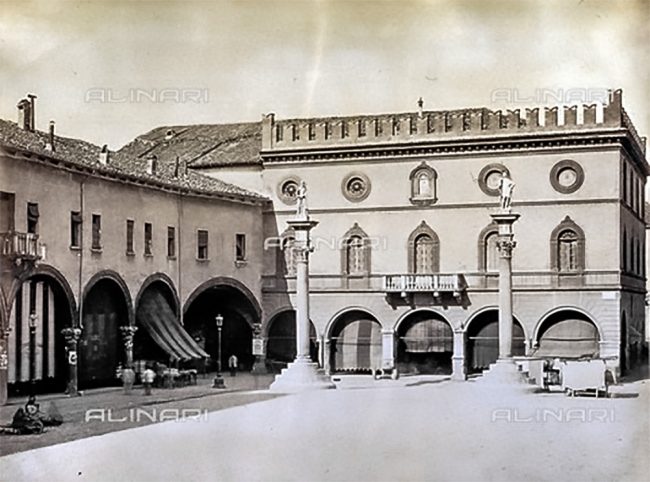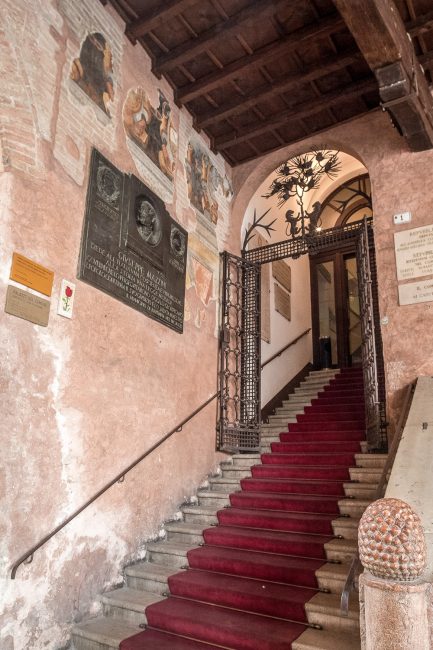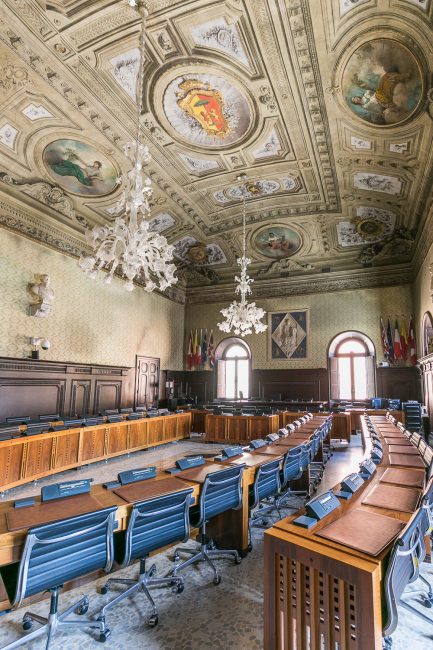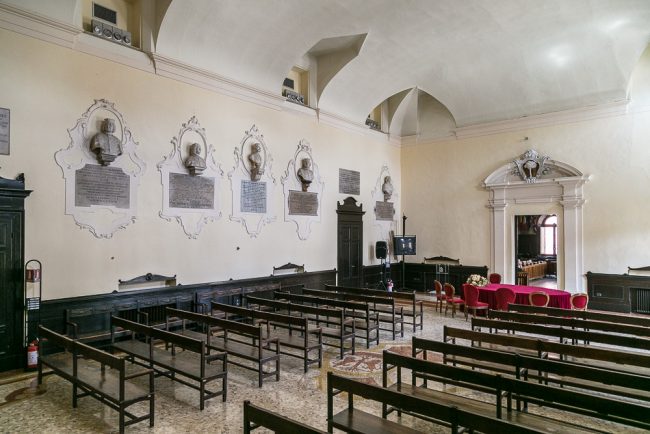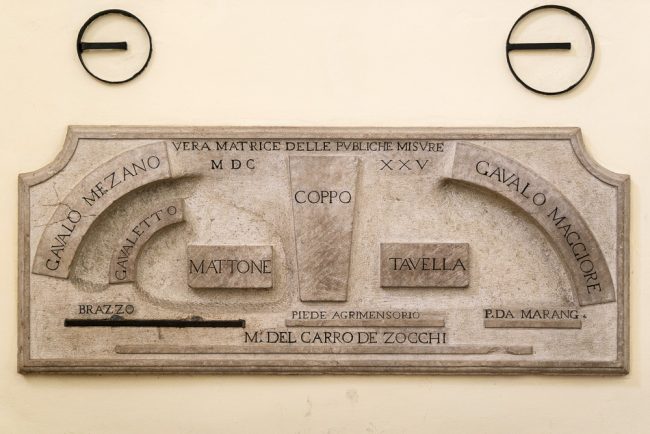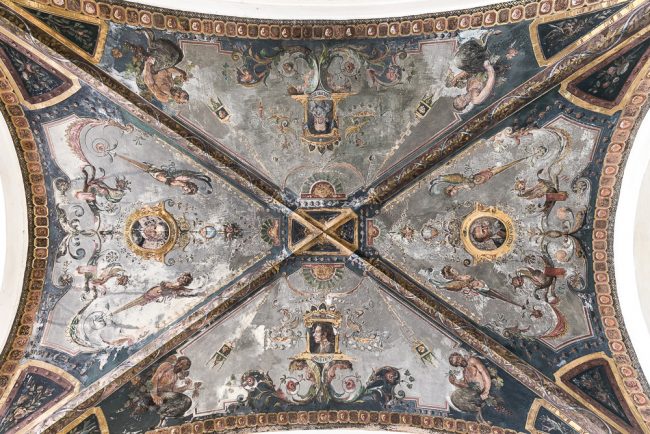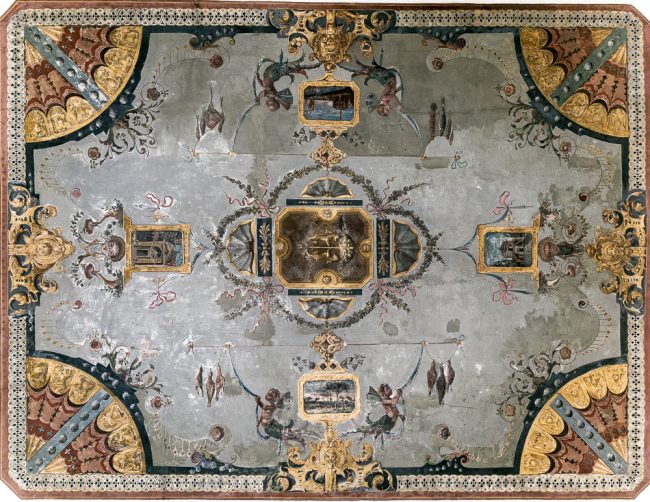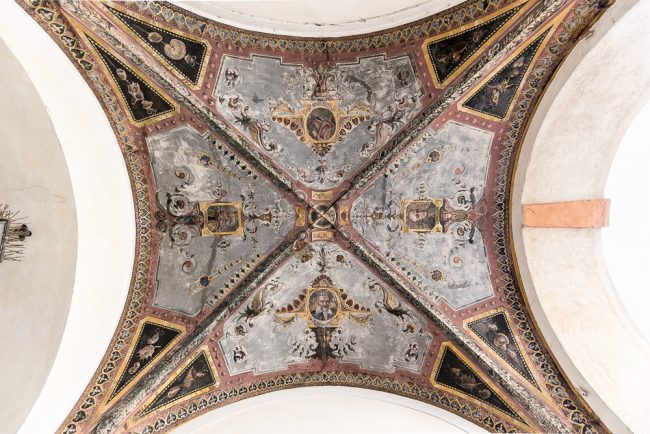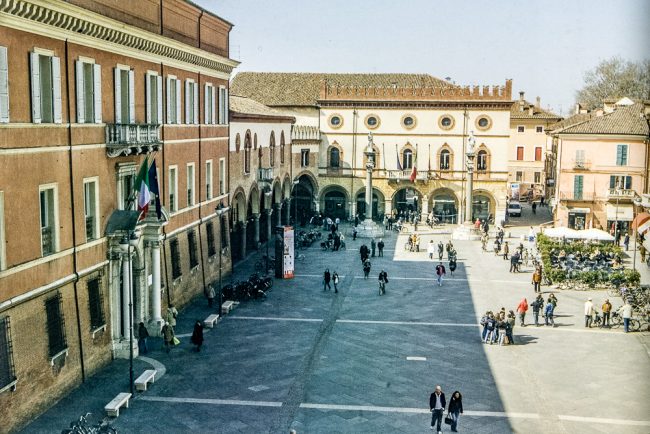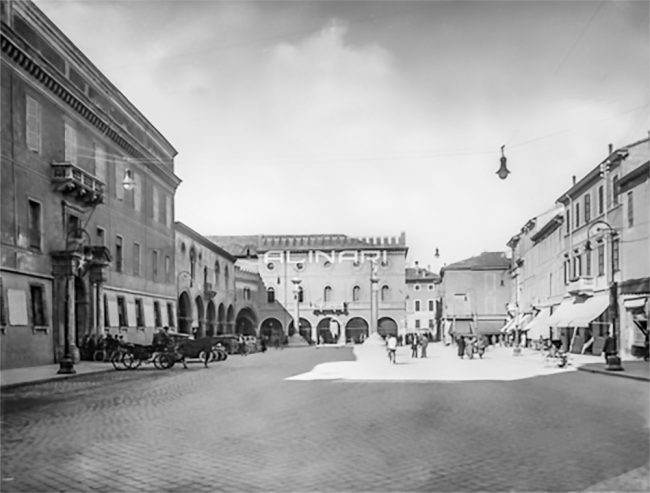Palazzo del Comune o Palazzo Merlato
1681
This site, once the riverbed of the Padenna river, was the area where many Medieval dwellings rose. Amongst these, there was the one of Bernardino da Polenta, who was renowned as a cruel lord of the town. After moving the Town Council from the archbishopric area, the seat of the Medieval Town Hall called “Palazzo Vecchio” was erected, followed shortly after by the nearby Palace of the Apostolic Legate. These are the years in which the configuration of the current Piazza del Popolo as centre of public power and town representative took place. This was completed by in the 16th century by burying the Padenna River and with the general urban planning: the square thus got the proportions of a Latin forum dictated by the “De re aedificatoria” of Leon Battista Alberti (1450 ca.).
Almost nothing of the ancient town hall remains; furthermore it seems that in 1512 the building was severely damaged by the pillage of the French. In 1534 the building was connected through a lowered vault that opens onto via Cairoli to the adjacent ‘Palazzetto veneziano’. During the construction fervor in Ravenna during the 17th century, especially due to the noble families, in 1681 the first nucleus of the current Town Hall was built, demolishing the previous structures that were there. A hypothesis is that the drawing was by Pietro Grossi. The building was progressively widened until 1761 when a further floor was added. The other name “Palazzo Merlato” comes from the Ghibelline battlement that was added in 1857.
The paintings in the vaults of the underpass that connects Piazza del Popolo with Piazza XX Settembre (or Piazza dell’Aquila) represent important characters and monuments of the city. Gaetano Savini (1873) took care of the new decoration of the Sala del Consiglio (1882). The Sala Preconsiliare exhibits busts of meritorious citizens and the 17th century matrix of the public measures. The stairway dates back, partly to the 15th century. The two “Venetian columns” that originally held up the statue of the city patron were placed in front of the building on the basements sculpted by Pietro Lombardo in 1483, St Apollinaire north and the Lion of St. Mark south; when the Venetian domination ended in Ravenna in 1509, the Lion was removed. The current setting dates back to 1644: the statue of St. Apollinaire was moved to the column south, whereas the one of St. Vitale was placed on the column north, work of Clemente Molli.
Click here to see the buildings in the surrounding area on the map

